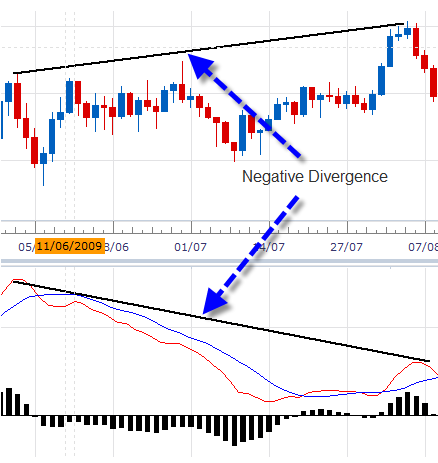Average Inventory Period Formula, Example, Analysis, Calculator
Contents:


In our example, let’s consider BlueCart Coffee Company, a coffee roaster. You can be forgiven if you think calculating an inventory’s average days on hand is complicated, but not to worry. Ending inventory is a common financial metric measuring the final value of goods still available for sale at the end of an accounting period. In contrast, if the average duration needed by a company to clear out its inventory stock is abnormally high relative to its industry peers, the following factors could potentially be the explanation.
The projection of the cost of goods sold line item finished, so the next step is to repeat a similar process for our forward-looking inventory days assumptions that’ll drive the forecast. Otherwise, the company’s inventory is waiting to be sold for a prolonged duration – which at the risk of stating the obvious – is an inefficient situation to be in that management must fix. Working capital management is a strategy that requires monitoring a company's current assets and liabilities to ensure its efficient operation. A stock that brings in a highergross marginthan predicted can give investors an edge over competitors due to the potential surprise factor.
Or maybe your business is seasonal—like ice cream in the summer or holiday decorations in winter. Looking at a single point in time won’t necessarily give you an accurate picture of your inventory. For the year is 3.65 days, meaning it takes approximately 4 days for the company to sell its stock of inventory.
It is not, however, meaningful enough on its own to be used to draw conclusions. Rather, DII must always be considered in the broader context of your business and the challenges you face. NetSuite Inventory Management helps businesses monitor and track their inventory.
What is Days Inventory Outstanding (DIO)?
Implementing automations throughout your inventory management process can help prevent slow-moving inventory from amassing by taking human error out of the replenishment process. One easy way to sell more of a slow-moving product is to bundle it with a more popular item — especially if the two items naturally go together (e.g., shampoo and conditioner) — and offer the bundle at a discount. That way, you can move less popular items out while still recouping most of your initial investment in the inventory. Without getting accurate projections, you may experience many canceled or delayed orders and angry customers — which can then turn into negative reviews and feedback for your business. Inventory can be raw materials or finished products, and the term refers to the number of goods on hand ready for sale or the amount of raw material on hand to produce salable goods.
The formula for calculating the inventory turnover, as mentioned earlier, is COGS divided by the average inventory balance. We’ll assume the average inventory days of our company’s industry peer group is 30 days, which we’ll set as our final year assumption in 2027. Like earlier, a step function is used to incrementally reduce our assumption from 35 days at the end of 2022 to our target 30-day assumption by the end of 2027, which implies a decline of approximately one day per year. Can also be divided by the average inventory to find out the inventory turnover ratio. You can also compare your days in inventory with your own historical inventory days calculations.
Top 25 Lotfeeders: No. 12 Thomas Foods International - Beef Central
Top 25 Lotfeeders: No. 12 Thomas Foods International.
Posted: Mon, 27 Mar 2023 06:03:49 GMT [source]
From there, management can proceed to investigate the main issue as to why the product is not moving fast and then decide on the way forward. The company needed approximately 45.63 days to sell all its current stock. Company managers can compare past figures with the current ones to find out if the level of efficiency is either going down or up. In 2017, the company was taking about 57 days to sell all its stock. This was an indication that it converted its inventory into cash more efficiently. You’ll see days sales in inventory, or DSI, out there frequently.
Create product bundles
Assuming that 2017 and 2018 ended in 365 days, determine the average inventory period of the company. By selling the whole stock within a short period for the case of foodstuff, consumers are guaranteed fresh and healthy. An increase in the average inventory period shows that the company is becoming inefficient, and this signals for investigation on what could be the possible causes of slow sales. Inventory days will increase based on the inventory and economic or competitive factors such as a significant and sudden drop in sales.
It is also the value of inventory carried over from the end of the preceding accounting period. This results in an average inventory of $9,875 over the time period being examined. A company may choose to use a moving average inventory when it's possible to maintain a perpetual inventory tracking system. This allows the business to adjust the values of the inventory items based on information from the last purchase. Average inventory is used often in ratio analysis; for instance, in calculating inventory turnover. Average inventory is a calculation that estimates the value or number of a particular good or set of goods during two or more specified time periods.

If you’re asking if that’s a good or bad ratio, that really depends on your business and the product being sold. Generally speaking, higher ratios indicate you either have very strong sales of the product or aren’t keeping enough stock on hand to meet demand . Lower ratios mean you’re not selling a lot of the product or that you have too much stock on hand. If you did the operation with different data, for example, with a rotation of 2.31 for 180 days, the average inventory days would be 77.92. Inventory days is an important inventory metric that measures how long a product is in storage before being sold.
By calculating the number of days that a company holds onto the inventory before it is able to sell it, this efficiency ratio measures the average length of time that a company’s cash is locked up in the inventory. Once you know the COGS and the average inventory, you can calculate the inventory turnover ratio. Using the information from the above examples, in this 12 month period, the company had a COGS of $26,000 and an average inventory of $6,000.
Calculating Inventory Turnover Ratio
There are many adjustments you can make in managing your inventory to reduce the amount of time inventory is sitting on your warehouse shelves. Here are some best practices for optimizing your inventory days on hand. If you can reduce your inventory days on hand , you will move inventory more quickly, and presumably earn back the cost the inventory sold — plus a profit — more quickly as well.

Top Types Of InventoryDirect material inventory, work in progress inventory, and finished goods inventory are the three types of inventories. The raw material is direct material inventory, work in progress inventory is partially completed inventory, and finished goods inventory is stock that has completed all stages of production. DII and inventory turnover are closely related in both concept and math. If a business’s DII for the last fiscal year equaled seven days , that means inventory turnover would be 52, equal to the number of weeks in a year.
What Is Days Sales of Inventory (DSI)?
A low number of days inventory is on hand is a sign that inventory is moving fast and not being stored for long, meaning it might be time to order new inventory. Using estimated inventory balances isn’t as accurate as using physical counts of inventory. To calculate the average inventory, we add the beginning inventory and ending inventory together, then divide by 2. They all have their own acronyms, which may make you think they’re different from inventory days in some way. Using the inputs we’ve gathered so far, our final step is to divide the number of days in the period (i.e. 365 days) by the inventory turnover.
- While you won’t necessarily earn your investment back, you can still write it off, and many customers will appreciate your company’s charitable efforts.
- It records all data about what inventory or stock is sourced, stored, ordered, sold and shipped.
- Average inventory period value shows the efficiency of the company in terms of its operations.
- Suppose that during a two-year time span from 2020 to 2021, a company’s cost of goods sold was $140 million and $160 million, respectively.
- A smaller number indicates that a company is more efficiently and frequently selling off its inventory, which means rapid turnover leading to the potential for higher profits .
- COGS is the entire cost of acquiring or producing the products sold during a specific period.
DSI is also known as the average age of inventory, days inventory outstanding , days in inventory , days sales in inventory, or days inventory and is interpreted in multiple ways. Indicating the liquidity of the inventory, the figure represents how many days a company’s current stock of inventory will last. Generally, a lower DSI is preferred as it indicates a shorter duration to clear off the inventory, though the average DSI varies from one industry to another. If you have not calculated the inventory turnover ratio, you could simply use the cost of goods sold and the average inventory figures. Then you would multiply that number by the number of days in the accounting period. Once you know the inventory turnover ratio, you can use it to calculate the days in inventory.
Why Businesses Should Care About Days in Inventory
Target investors sure don’t seem to be worried about this sudden increase in a https://1investing.in/ that some sources say may indicate plummeting efficiency. In fact, as of this writing, Target stock has outperformed the market over trailing one-, six- and 12-month periods. A high days inventory outstanding indicates that a company is not able to quickly turn its inventory into sales.

This can be due to poor sales performance or the purchase of too much inventory. Having too much idle inventory is detrimental to a company as inventory may eventually become obsolete and unsellable. A high amount of inventory days on hand means a low turnover rate with inventory.
This could happen for a few reasons, like low average inventory days formula, low demand, or more valuable products that do not get bought and sold often. The first formula calculates inventory days on hand by dividing your average inventory value for a year by the cost of goods sold for that year, and then multiplying that result by 365. Determine average inventory for two or more accounting time periods using the following formula.
The average inventory method takes a mean average over a longer period of time to create a clearer picture of how much inventory is normally on hand. With the right inventory management software, merchants can set up automatic reorder point notifications when SKU levels reach certain thresholds, which enables you to reorder inventory at just the right time. Some systems even allow merchants to fully automate the purchase order process to avoid replenishing inventory too early or too late.
- Inventory management software is all but mandatory when using DII for decision-making purposes.
- A smaller inventory and the same amount of sales will also result in high inventory turnover.
- Successful inventory management is a key focal point for companies as it allows them to better manage their overall business in terms of sales, costs, and relationships with their suppliers.
- Instead of waiting for financial statement compilations to get quarterly or annual numbers, good software will let you generate metrics in real time for any length of period you want.
By multiplying the ratio of inventory value to COGS, we see the number of days it typically takes to clear on-hand inventory. Referring to this metric as “DSI” specifically is often done when companies want to emphasize how many days the current stock of inventory will last. You’ll walk away with a firm understanding of what inventory days is, why it's an inventory management KPI you must pay attention to, and how to calculate ending inventory. Beginning inventory is the book value of a company’s inventory at the start of an accounting period.
